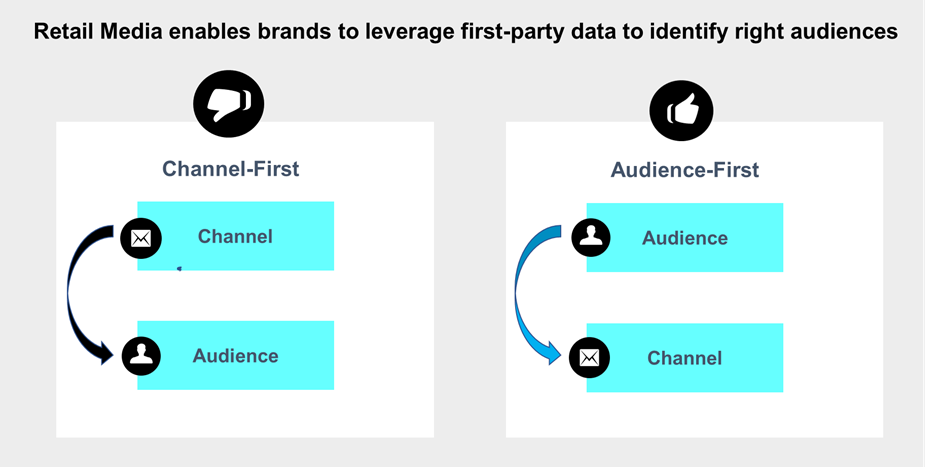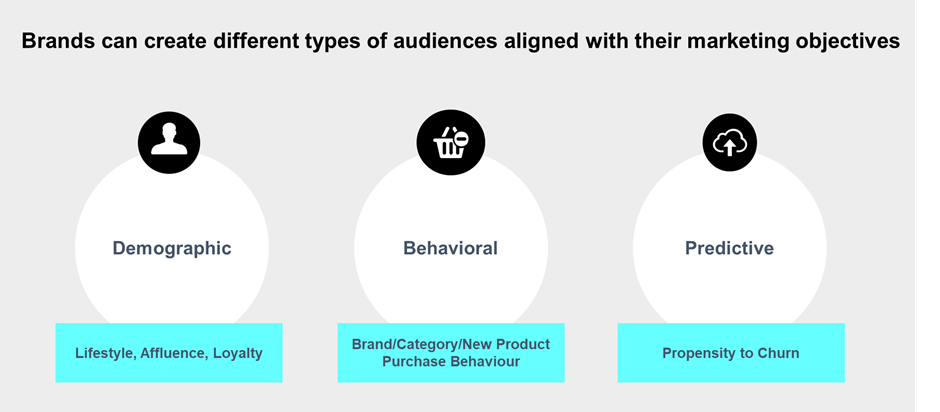The importance of choosing audiences over channels
How can you be everywhere, all at once? Cryptic as it might sound, that question isn’t the starting point for some esoteric riddle. Instead, it’s the burning issue that brand marketers everywhere face whenever it comes time to budget out their advertising investments for the financial year ahead.
The simple answer, of course, is: “you can’t”. But in an age where customers can shop almost literally anywhere, brands and agencies have an almost limitless number of ways in which to engage with them. And in lieu of a limitless budget, the challenge is knowing where, when, and how to reach those people in a way that delivers the best possible returns.
For a long time, the answer has been to focus primarily on specific channels – and understandably so. Budgets have to be divvied up somehow, after all, and it makes a huge amount of sense to segment them based on the size or value of an audience across each medium. Multichannel strategies have formed a considerable part of the marketing playbook over the past decade as a result.
Now, however, we’re beginning to see clear evidence that a channel-based approach to marketing is no longer enough to keep up with the realities of modern retail. Driving that change are two very different – though ultimately interlinking – factors.
Changing attitudes and shrinking returns
The first of these is consistency. When brands prioritise their marketing spend on a channel-by-channel basis, the main danger is that of fragmentation. One piece of research suggests that only 14% of organisations run coordinated marketing campaigns across all channels[1], for instance, meaning that the vast majority likely struggle with significant disconnects across everything from insights through to measurement. Channel-led planning based on the awareness, consideration, and conversion stages of marketing are likely to result in siloed marketing teams with no overall view of the customer journey.
Fragmentation of that kind feels increasingly outdated when shoppers have come to view their individual retail experiences as part of a larger, connected whole. Inconsistent experiences have an undoubtedly negative impact on the customer experience, particularly when it comes to marketing. No-one wants to find themselves sent the same offer multiple times, for example, or – worse – be sent conflicting promotions in different formats.
So, the risk of inconsistency is one issue, particularly as the number of marketing channels continues to grow. Combined with that, however, is the fact that some of those channels simply don’t deliver the same returns that they used to.
Research released last year by marketing attribution firm Measured suggests that cost-per-click rates on two of the world’s largest advertising platforms have skyrocketed in recent times. Almost certainly in response to increased demand for digital ad space in response to the pandemic, cost per thousand (CPM) prices rose by 61% at Meta and 53% at YouTube[2]. In ROI terms, that essentially means that advertisers are having to run just to stand still.
With that in mind, it naturally becomes more important than ever for marketers to ensure that the campaigns they run reach more of the “right” people – those with the highest likelihood of making a purchase or taking a specific action. Even that will be harder within the next couple of years, however, as Google seems determined to push ahead with its plans for the deprecation of third-party cookies no later than 2024[3].
With all of these issues conspiring to undermine the effectiveness of a channel-based approach to marketing, what we believe is needed now is a shift towards an audience-centric strategy.
Right place, right time – every time
One of the unique qualities inherent to retail media as an advertising discipline is the opportunity it provides to utilise first-party retailer data. Moreover, with the help of platforms like dunnhumby Sphere, that data can be used to create customised audiences that effectively solve the challenge of being everywhere at once.
At the heart of this approach is a fundamental reversal in the relationship between audiences and channels. Rather than starting with a channel and hoping to find the right shoppers within it, brands can instead use first-party data to identify the right audiences, learn which channels provide the best opportunities to engage with them, and then form their strategy accordingly.

At dunnhumby, we tend to think about audiences in three main ways:
- Demographic – based on things like lifestyle, affluence, and loyalty.
- Behavioural – based on indicators like which brands and categories people shop.
- Predictive – based on how people are likely to behave in the future.

When we overlay those audiences with the key overarching marketing objectives that a brand may want to accomplish, the benefits of an audience-centric approach become that much clearer.
Say Brand X wants to raise awareness of a new product, for instance. A good place to start is with people who buy similar products within or outside the category (behavioural) or have high propensity to try new products based on their past purchase behaviour (predictive)
By finding shoppers who match those criteria and looking at which marketing channels or tactics they’re most engaged with, we can start to focus advertising spend in a very specific way.
The same process can be applied across numerous different marketing objectives such as retaining most loyal customers or preventing churn. Maximising purchase volumes during a peak season might require a mix of Behavioural and Predictive audiences – cross-shoppers, brand buyers, and relevant customers, for example.
Ultimately, the many possible combinations are far less important than the overarching philosophy. Because, in the pursuit of true efficiency – and consistency – we need to unlearn the rules of a channel-centric approach to marketing; it’s time to let the audience, and their data, do the talking.
[1] Three Issues Hindering Progress In Multichannel Marketing – Adobe CMO
[2] Marketers are paying a lot more for digital ads. Here's exactly how much it costs to advertise on Google, Facebook, Amazon, and TikTok – 16 May, 2022
[3] Google Gives Third-Party Cookies Another Year – Search Engine Journal – 28 July, 2022
TOPICS
The latest insights from our experts around the world




